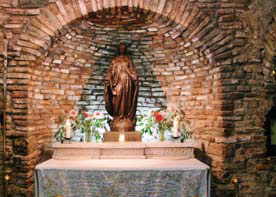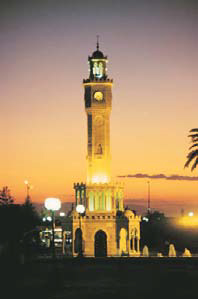 İzmir
İzmir is the third biggest city in Turkey, with a population of around 2.5 million, the
second biggest port after Istanbul, and a good transport hub. Once the ancient city
of Smyrna, it is now a modern, developed, and busy commercial centre, set around
a huge bay and surrounded by mountains and was. The broad boulevards, glassfronted
buildings and modern shopping centres are dotted with traditional red-tiled
roofs, the 18th century market, and old mosques and churches, although the city has
an atmosphere more of Mediterranean Europe than traditional Turkey.
The climate is comfortable, with a relatively mild summer due to the refreshing breeze
from the Aegean. The long attractive palm-fringed promenade, Birince Kordon, which
stretches the entire length of the city up to the Alsancak Ferry Terminal, is a popular
spot for evening walks, and there are many cafes along the waterfront. Izmir has a
good selection of culture and entertainment, from the Archaeological and Ethnographic
Museums, to the Izmir State Opera and Ballet and Izmir State Symphony Orchestra,
to the many bars and clubs. The cosmopolitan and lively city gets even busier during
the International Izmir Festival (mid-June to mid-July) with music and dance, with performances also in nearby
Çeşme and Ephesus. 
The House of the Virgin Mary, located on the top of the "Bulbul Dagi" (Mount
Nightingale in English, which was known as Mt. Koressos in ancient times) 7
km from Selcuk is a shrine that is sacred to both Christians and Muslims. The
house is called "Meryem Ana Evi" by Turks, which means "Mother Mary's
House". It is believed by many that Mother Mary may have come in the area
together with Saint John, who spent several years in the area to spread
Christianity. The house which has a lovely atmosphere hidden in green is
believed to be the last residence of the Virgin, where she may have spent her
last years.
The original house was consisted of an anteroom, where you see the candles proposed today, bedroom and
praying room and a room with fireplace. A front kitchen fell into ruins and has been restored in 1940's. The
building looks more like a church than a house, today, visitors are allowed to the central part and the room
on the right side of the altar. At the exit of the church area, you can see a source of fountains which called
the "Water of Mary" and believed to have curative properties.